#untold history
Text
David Icke video from 1998. 👆
Everything he said is playing out right now. They are talking about chip implants, forcing everybody to have a digital ID / vax passports and programmable Central Bank Digital Currencies. 🤔
#pay attention#educate yourself#educate yourselves#wake the fuck up#wake up#wake up america#wake up people#wake up world#do your own research#do your research#do some research#do your homework#a time in history#recent history#history lesson#history#hidden history#untold history#censorship
311 notes
·
View notes
Note
Unsure if anyone has asked you already, but you have any input on Asuka's theme, The Gravity? It sounds amazing in my personal opinion and it also sounds like Asuka's searching for something particular when studying the Tome of Origin.
There's a LOT I want to say about the Lyrics, but I've been holding back since I haven't put them on my blog just yet.
The song asks a very important question:
"What Facts should we accept? The Reality or the Truth?"
And if you've followed my blog for some time now, you know we've had loads of discussion on what is and is not canon in Guilty Gear's Story and Timeline.
What Asuka knows to be the Truth, versus what the Public "thinks" is the Truth...
"Find them, Find them... something UNSEEN. Play Back the History, Answers WITHIN..."
Asuka has been searching through Mankind's history, within Mankind's encounters with the Universal Will... encounters with things that AREN'T HUMAN...
He's been looking for the "hidden history"... the history that Mankind doesn't comprehend at this time.
He's also been looking for the things Happy Chaos has tampered with... the Paradoxes, the altered events... the closed Timelines.
The Dark History that has been kept HIDDEN AWAY.
The Truth that someone doesn't WANT us to KNOW.
Do I need to spell it out further?
There's a lot more to be told. Sol's story was just the tip of the Iceberg.
10 notes
·
View notes
Text
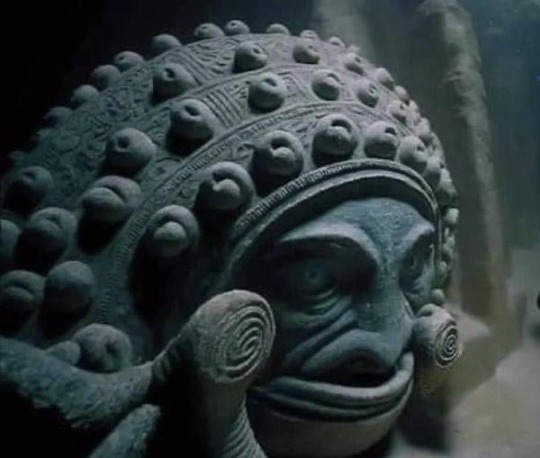
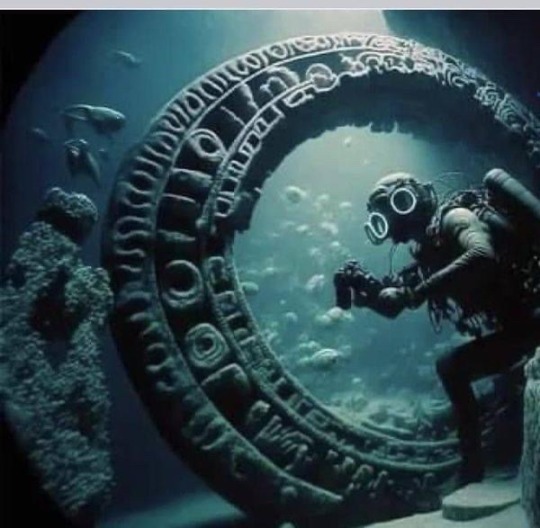

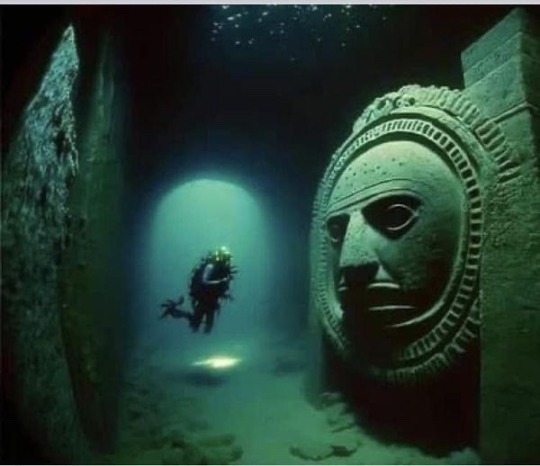
Yonaguni structures
They are a set of structures discovered on the Japanese island of Yonaguni around 1985 by the Japanese diver Kihachirō Aratake, who found them by chance. It is a megalith, which was probably out of the sea during the ice ages, with shapes on its surface that seem to have been carved by humans.
There has been much speculation about the origin of this monument as it is called in Japan. For various geologists and historians, the structures could have a natural origin, while others argue that these structures show artificial and human work, at least in part.
On the pseudo-archaeological side, other authors suppose that Yonaguni was part of the Mu civilization, whose fate would have been similar to that of Atlantis or Thule.
Some time after its discovery, a group of scientists led by Misaki Kimura, from Ryūkyū University, confirmed its existence. According to Professor Kimura's study, the natural structure was at some time modified by humans. This would give strength to the speculations according to which Yonaguni could have been part of the civilization of Mu and that it later disappeared, just like Atlantis or Thule. It would be a construction carried out at least 10 millennia ago, which would make it, together with the Göbekli Tepe sanctuary, the oldest known architectural structure, long before the first buildings in Mesopotamia, Egypt, India and China.
14 notes
·
View notes
Text

Another one I’m currently reading.
“How to Change Your Mind: What the New Science of Psychedelics Teaches Us About Consciousness, Dying, Addiction, Depression, and Transcendence” by Michael Pollan
Back in the 50s and 60s psychedelic drugs like psilocybin and LSD were actually seen as helpful tools into understanding the human brain. Somewhere along the line it got a bad wrap with rumors of bad trips, people committing suicide while under the influence of these substances, and even the idea that someone would permanently lose their mind if they were to ever consume these compounds.
In recent years, starting back in the 90s, psychedelics made a come back in the mental health field. Credited with helping treat anxiety, depression, addiction and more in minuscule “micro-doses”, LSD and the active psychedelic compound in magic mushrooms, psilocybin, have slowly regained their reputation as being something almost spiritual.
It’s gone so far as for the federal government to allow the import of foreign psychedelic compounds and substances that naturally produce said substances like “ayahuasca” from Central and South America for religious purposes. These religious ties to psychedelic compounds has opened a lot of doors for those interested in the science and spirituality of psychedelics.
#tomework#book review#book blog#nonfiction#currently reading#history#pschedelic#how to change your mind#Michael pollan#untold history#drugs#LSD#psilocybin#ayahuasca#mdma#ecstasy#shrooms#magic mushrooms#depression#anxiety#addiction#alternative treatment
31 notes
·
View notes
Link
The Black Khans of Asia Major were Americans
0 notes
Text
The Untold History of the United States
Prequels
Episode A: 1900-1920 – World War I, The Russian Revolution & Woodrow Wilson
Episode B: 1920-1940 – Roosevelt, Hitler, Stalin: The Battle of Ideas
Episode C: On History: Tariq Ali and Oliver Stone in Conversation
Chapter 1: World War II
This chapter delves into the history of World War II, with a focus on the often-overlooked events that played a key role in the war's outcome. The Spanish Civil War, Roosevelt's desire to join the allies, Japan's strategic decisions leading up to Pearl Harbor, and the Soviet Union's contribution to the war effort are all explored in detail.
Chapter 2: Roosevelt, Truman & Wallace
In this chapter, we examine the aftermath of World War II, including Stalin's attempts to exert control over Poland and Eastern Europe, the Democratic party's efforts to remove Henry Wallace from the presidential ticket in 1944, and Britain's attempts to maintain its colonial holdings.
Chapter 3: The Bomb
Chapter three centers around the conclusion of World War II, with a particular focus on the events leading up to the use of atomic bombs and Japan's subsequent surrender. This chapter explores the Truman era of American history, with special attention given to the overlooked role of Henry A. Wallace.
Chapter 4: The Cold War: 1945-1950
The origins of the Cold War are analyzed in this chapter, with a month-by-month breakdown of the initial aggressors. The chapter also covers Winston Churchill's famous "Iron Curtain" speech, the rise of the "Red Scare" in the US, and Joseph McCarthy's controversial anti-Communist crusade.
Chapter 5: The '50s: Eisenhower, the Bomb & The Third World
Eisenhower and the CIA are the main focus of this chapter, with an examination of their role in shaping the global political landscape of the 1950s. The chapter delves into the development of the Cold War and the US's battle against communism.
Chapter 6: JFK: To the Brink
Chapter six focuses on JFK's presidency, including the Bay of Pigs invasion and the Cuban Missile Crisis. The chapter also explores early US involvement in Vietnam and JFK's attempts at peace with Khrushchev, as well as the assassination of JFK.
Chapter 7: Johnson, Nixon & Vietnam: Reversal of Fortune
The Vietnam War is the central theme of this chapter, with a focus on the public's disillusionment with modern military power in the face of guerrilla-style warfare. Richard Nixon's administration is also examined, with a particular focus on its methods and their impact on American politics.
Chapter 8: Reagan, Gorbachev & Third World: Rise of the Right
This chapter explores the relationship between Mikhail Gorbachev and Ronald Reagan, which led to new attempts at peace as the Berlin Wall came down. However, the chapter also covers the Iranian hostage crisis, which heightened fears and uncertainty around the world.
Chapter 9: Bush & Clinton: American Triumphalism – New World Order
In this chapter, we examine the US invasion of Panama and its failed attempt at establishing peace in the aftermath of the Cold War. The chapter also explores the George W. Bush administration's approach to security, which ultimately led to a new era of "endless war" in Iraq and Afghanistan.
Chapter 10: Bush & Obama: Age of Terror
The final chapter of the book centers around homeland security and the worldwide global security state. It also covers the economic struggles facing the US, as well as the presidency of Barack Obama and the future of the American Empire.
1 note
·
View note
Text
youtube
"Based on a true story" is doing a lot of work here, as usual; and no story about the Medici -- the Medici! -- is "untold." However! this is an interesting trailer for what looks like a very interesting film.
#untold story about the medici bahahaha#that said#daphne di cinto#is very transparent about wanting to have this film be about the present as much as/more than it is about the past#which is cool#all directors of historical films are doing that but the degree to which they are self-aware and/or transparent about it... varies#black history#history side of tumblr#Youtube
15 notes
·
View notes
Text

I don't read a ton of books about science or scientists, but Katie Spalding's book, Edison's Ghosts: The Untold Weirdness of History's Greatest Geniuses (BOOK | KINDLE | AUDIO), which was released in May, is easily one of the most entertaining books I've read in the past couple of years.
When you're sitting down to read a book by someone with a PhD in mathematics, you don't expect it to be fun from cover-to-cover, let alone flat-out funny. In fact -- and I know that the fine folks at Hachette won't be able to use this in a blurb -- but Dr. Spalding's book is fucking hilarious! And that description is especially fitting because Katie Spalding had to have set some sort of record for creative profanity in a book primarily about science and scientists, an achievement that only makes Edison's Ghosts more entertaining by the chapter.
Speaking of chapters, I can't do justice to Dr. Spalding or Edison's Ghosts -- which was published in Harding's native UK under the even better title of The Limits of Genius: How Some of the World's Greatest Minds Were Surprisingly Stupid -- with a couple of quick paragraphs, so I'm just going to share some of the actual titles of the chapters of the book from the table of contents so you can get a hint of how amazing this book truly is:
1. The Mathematical Cult Leader Pythagoras, and His Incredibly Stupid Death
2. Confucius Was an Ugly Nerd with Low Self-Esteem
3. Never, Ever Hire Leonardo da Vinci
4. Galileo Utterly Fails to Read the Room
6. When René Descartes Got Baked
10. Émilie du Châtelet Cares Not for Your Social Mores, and She Will Fight You in Her Underwear to Prove It
13. Lord Byron, the Patron Saint of Fuckboys
16. John Couch Adams Ignores His Mail, Loses Neptune
18. Charles Darwin: Glutton; Worm Dad; Murderer?
20. Sigmund Freud Used Cocaine So Much He Thought Numbers Wanted to Kill Him
21. Arthur Conan Doyle Gets Pranked So Hard He Claims Fairies Exist
23. Real-Life Supervillain Nikola Tesla Takes the Term 'Pigeon Fancying' a Bit Too Literally
24. Marie Curie Defies All the Odds to Accidentally Poison Both Herself and Thousands of Strangers
25. Albert Einstein: Public Nuisance, Love Rat
29. Yukio Mishima and the Shortest, Gayest Fascist Coup in History
30. NASA Forgets about Women, Toilets and the Metric System
And those are just SOME of the actual chapter titles. If you don't want to read Edison's Ghosts: The Untold Weirdness of History's Greatest Geniuses after that taste, you're as big of an idiot as many of history's geniuses, as Katie Spalding so colorfully reveals in this brilliant book, available now from Hachette Book Group's Little, Brown and Company
#Books#Edison's Ghosts#Katie Spalding#Edison's Ghosts: The Untold Weirdness of History's Greatest Geniuses#Hachette#Little Brown and Company#Hachette Book Group#The Limits of Genius#The Limits of Genius: How Some of the World's Greatest Minds Were Surprisingly Stupid#Book Suggestions#Book Reviews#Book Recommendations#Science#Scientists#Genius#Geniuses#Biographies#Scientist Biographies
21 notes
·
View notes
Text
youtube
The Untold History of the Blackfeet Native American Tribe
The Blackfeet Nation, also known as Niitsitapi or the Blackfoot Confederacy, was an Indigenous community once inhabited the northern Great Plains of North America, primarily spanning present-day Montana, Alberta, and Saskatchewan.
Their history unfolds as a multifaceted narrative that spans millennia. The Blackfeet are thought to have undertaken a migration to the Great Plains from the northwest, possibly as early as 10,000 years ago. Initially affiliated with a larger Algonquin-speaking group, they gradually developed a distinctive language and culture.
As a people deeply intertwined with the natural landscape of the northern Great Plains and the Rocky Mountains, the ancient Blackfeet culture was characterized by a profound connection to the land, a nomadic way of life, and a wealth of spiritual and social traditions.
#The Untold History of the Blackfeet Native American Tribe#Black#Black Native Americans#Black Lives Matter#Black History Matters#american history#Blackfeet Indians#Youtube
8 notes
·
View notes
Text
Our government murdered President John F Kennedy.
"The very word secrecy is repugnant in a free and open society.
And we are as a people, inherently & historically opposed to secret societies, to secret oaths & to secret proceedings.
Our way of life is under attack. Those who make themselves our enemy are advancing around the globe.
No war ever posed a greater threat to our security. If you are awaiting a finding of "clear and present danger," then I can only say that the danger has never been more clear & its presence has never been more imminent.
For we are opposed around the world by a monolithic & ruthless conspiracy that relies primarily on covert means for expanding its sphere of influence, on infiltration instead of invasion, on subversion instead of elections, on intimidation instead of free choice, on guerrillas by night instead of armies by day"
Expose the lies🤔
Expose the evils🤔
Dark to Light✨
#pay attention#educate yourself#educate yourselves#wake the fuck up#wake up#wake up america#wake up people#wake up world#do your own research#do your research#do some research#do your homework#a time in history#recent history#history lesson#history#untold history#hidden history
113 notes
·
View notes
Text
When the World Was Black: The Untold History of the World's First Civilizations, Part One: Prehistoric Cultures - Supreme Understanding
Download for FREE from Z-LIB
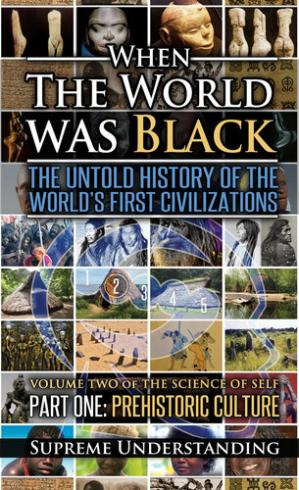
In this book, you'll learn about the history of Black people. I don't mean the history you typically learn in school, which most likely began with slavery and ended with the Civil Rights Movement. we're talking about Black history BEFORE that. Long before that.
In this book, we've covered over 200,000 years of Black history. For many of us, that sounds strange. We can't even imagine what the past of Black people was like before the slave trade, much less imagine that such a history goes back 200,000 years or more.
Download for FREE from Z-LIB
#When the World Was Black: The Untold History of the World's First Civilizations#Part One: Prehistoric Cultures#Africa#African Civilization#world history#African History#Black History
35 notes
·
View notes
Text

4 notes
·
View notes
Text
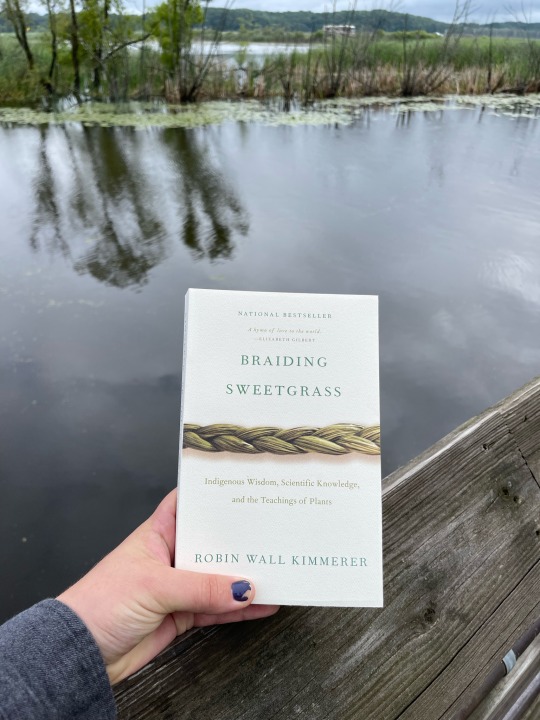
After seeing this book for the first time and making the mistake of not buying it, I have spent the last three months searching for it at every bookstore I’ve been to. While on vacation up north in my hometown, I popped up to one of the bookstores and finally found it:
“Braiding Sweetgrass: Indigenous Wisdom, Scientific Knowledge, and the Teachings of Plants” by Robin Wall Kimmerer
I’ve already read the first couple of chapters and cannot put this book down. I forced myself to so I could finish my errands before heading home for the weekend.
I am absolutely loving this book as much as I wanted to. Highly recommend this to anyone with an interest in traditional, non-western spirituality and/or an interest in the natural world around you. I’ve always felt a deep connection to the land around me both wherever I am, and the land I call “home”. This book is helping to deepen that connection and I am thankful to say the least.
#tomework#book review#book blog#want to read#nonfiction#currently reading#untold history#indigenous wisdom#scientific knowledge#the teachings of plants#spirituality#native land#as a white person and someone in touch with their white guilt and the history of my colonizer I’m sorry
6 notes
·
View notes
Note
hii, could you do a weaving about the vulnerability of hope? Like how it feels like setting yourself up for disappointment, knowing the ends' not gonna be in your favor but hoping desperately anyways
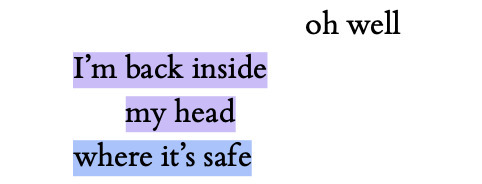





ocean vuong time is a mother: "dear peter" (via @weltenwellen) \\ rebecca solnit hope in the dark: untold histories, wild possibilities \\ charlie kaufman & iain reid i'm thinking of ending things (via @springmyth) \\ fyodor dosteovsky the brothers karamazov \\ susan sontag as consciousness is harnessed to flesh: journals and notebooks (1964-1980) \\ rebecca solnit hope is an embrace of the unknown (via @quiiescenza)
kofi
#asks#anonymous#on hope#on self#on identity#ocean vuong#time is a mother#rebecca solnit#hope in the dark: untold histories wild possibilites#hope in the dark#i'm thinking of ending things#charlie kaufman#iain reid#the brothers karamazov#fyodor dosteovsky#susan sontag#mine#my webweaving#webweaving#web weaving#webweave#web weave#webs#web#ww#parallel#parallels#parallelism#compilation#compilations
172 notes
·
View notes
Text
i see one more book calling itself a new history of anything, i will start throwing things
27 notes
·
View notes
Text
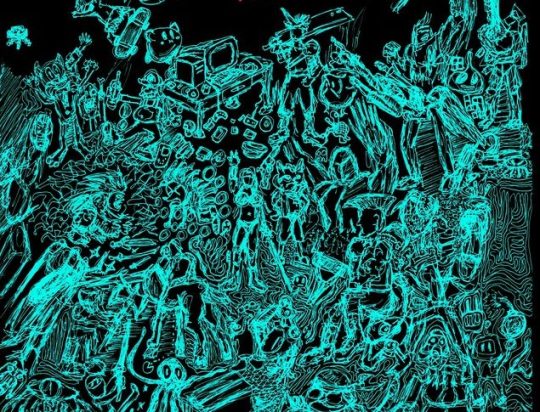
The Untold History of Game Developers: Volume 5
The Untold History of Game Developers Volume 5 is a spin-off of The Untold History of Japanese Game Developers trilogy. This time there’s less focus on Japan and more of a global outlook. There are 567 pages, with a review, chapter excerpt, and full contents below. A lot of stuff is republished from Hardcore Gaming 101, but quite a lot is also previously unseen material.
Please note that while page spreads are used to illustrate the content and design, the book is printed only in black and white. Colour printing would, sadly, increase the cost by five times.
Read more...
#Hardcore Gaming 101#books#Untold History of Game Developers#video game history#literature#video games
7 notes
·
View notes